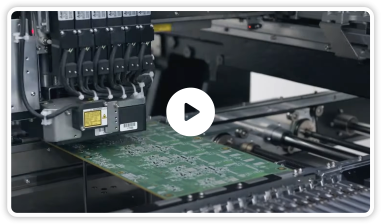There is an ever-increasing demand for higher technical performance of PCBs or printed circuit boards at affordable costs, even from the military and aerospace industries. At Rush PCB Inc., our investments in terms of both manufacturing expertise and equipment focus not only on reliability and high performance but also on the extreme environmental tolerances that these industries demand.
PCBs meant for military and aerospace industries require high levels of technical performance to allow them to work satisfactorily and reliably in extreme environmental conditions, even when performing complex functions.
We ensure that the PCBs we manufacture meet our customers’ specifications while being cost-effective. There can be additional requirements for PCBs including an expected lifetime of up to 5–15 years.
The assembled boards may have to perform in severe conditions like extreme humidity, temperature, impact, and vibration, including survival in hostile environmental conditions like blowing sand, salt spray, dust, and solar radiation.
Military and Aerospace Requirements
PCB assemblies for the military and aerospace industry must meet the highest mechanical and electrical reliability. In fact, all PCB assemblies, no matter what systems or modules they are used in, must have the acceptance level of IPC Class 3A, the highest IPC reliability standard. Several factors contribute to these rigorous requirements:
Harsh Environments
Aerospace systems, whether inside a spacecraft or aircraft, must perform in hostile environmental conditions like extreme levels of vibration, temperature fluctuations, and severe changes in pressure. Likewise, military systems have to perform in desert sands, arctic snows, and oceanic waters that are also hostile. It is necessary that the design and assembly of PCBs also withstand these conditions and perform flawlessly.
Safety
As aerospace and military applications involve humans, safety must be a priority. Failure of any PCB assembly or component may have catastrophic consequences.
High Cost of Failure
Failure of products or systems in aerospace or military applications not only leads to significant financial losses but may also cause serious risks to the safety of humans involved. Therefore, there is a serious need for careful planning, testing, and strict adherence to standards in military and aerospace PCB assembly.
Extended Lifespan
Most military and aerospace systems typically have long lifespans, often extending to decades. To avoid frequent repairs or replacements, especially in situations where there is limited or impossible accessibility, the PCB assembly must work without issues for an extended period.
Regulatory Compliance
Both the aerospace and military industries are subject to strict certifications and regulations imposed by aviation, space, and military agencies. All PCBs meant for military and aerospace applications must adhere to these standards to ensure reliability, safety, and proper performance.
System Complexity
Most military and aerospace systems are highly complex, mostly with several interconnected modules and PCBs mounted with components. The failure of a single component or PCB assembly can disrupt the functioning of the entire system. Each component in the system must perform seamlessly to maintain the overall integrity of the system.
Necessary Processes in Military and Aerospace PCB Assembly
Most military and aerospace PCB assemblies tend to follow the IPC-A-610 Class 3 standard, using SMT or surface-mount technology. Our assembly process for military and aerospace PCBs undergoes the following process:
- Solder Paste Printing
- 3D Solder Paste Inspection
- Component Placement
- Automated X-Ray Inspection
- Reflow Soldering
- 3D Automated Optical Inspection
- PCB Assembly Value Addition
- Testing
-
Inspection
Our 3D solder paste inspection allows us to inspect and ensure proper deposition of solder paste before we begin component placement. We typically use X-ray inspection for a detailed inspection of solder paste deposited, as it offers a thorough examination of all potential defects in hidden connections.
We use the 3D automated optical inspection to detect surface defects like cold solder joints, misaligned components, missing components, and solder bridges.
-
Nitrogen Reflow Soldering
Nitrogen is an inert gas that does not react with metals. We use a nitrogen atmosphere during reflow soldering, as it prevents oxidation of solder joints and reduces flux moisture volatilization. We replace normal reflow soldering with nitrogen reflow soldering as it not only improves the soldering quality but also helps meet the stringent high-quality requirements of military and aerospace PCB assembly.
-
Conformal Coatings
After soldering the PCB assembly and inspecting it, we apply a conformal coating. This is a protective layer to guard the PCB assembly against chemicals, moisture, vibrations, radiation, and temperature variations.
-
Testing
We subject all our PCB assemblies for the military and aerospace industries to rigorous testing to assess their performance under radiation, pressure changes, vibrations, temperature changes, and more. For instance, we conduct thermal shock testing at 288 C for 10 seconds, repeating it three times, and each repetition lasting 10 seconds. Our assembled boards also undergo thermal aging, peel tests, functional testing, pressure tests, and more.

Design of PCBs for Military and Aerospace
- Various factors need careful consideration when designing military and aerospace PCBs, which must exhibit high reliability and robustness, without any margins for error. To design high-quality PCBs for military and aerospace applications, we follow certain guidelines like:
-
High-Quality Materials Selection
Military and aerospace applications require high-perforance, reliable materials. We use many such materials including TC series, Duroid/RT laminates, RO4000 series, and more. For the MIL-spec components we use for PCB assemblies, we consider their durability, shock absorption, thermal management, and more.
-
Electromagnetic Compatibility
EMC or electromagnetic compatibility is a priority when designing PCBs for military and aerospace applications. While most PCBs we make operate at high frequencies, the working environment of military and aerospace equipment has high EMI or electromagnetic interference. Therefore, when creating the layout of our PCBs, we consider several factors like grounding, emission noise suppression, crosstalk, anti-interference performance, and more.
-
Adherence to Reference Standards
When creating PCB assemblies for military and aerospace applications, we strictly adhere to reference standards like AS/EN 9100 and IPC 6012DS, to ensure rigorous performance, safety, and minimal maintenance.
-
Thermal Management
For military and aerospace applications, we ensure efficient thermal management and effective heat dissipation. We achieve this by using materials like FR408 and Pyralux AP. We may also increase copper thickness or component spacing for better thermal management.
-
Conformal Coatings
As discussed earlier, we apply conformal coatings on PCB assemblies for military and aerospace applications. This protects the assembly against humidity, heat, moisture, chemicals, and vibrations.
-
Routing
Often, we increase the circuit density of PCBs when designing for military and aerospace applications. Not only does this reduce the PCB size, but also effectively separates various circuits according to their functionality. We also ensure a proper distribution of components for a uniform wiring density, while taking care of noise tolerances, signal conversion times, different logic levels, and logic interconnections.
-
Flex and Rigid-Flex PCBs
We typically use flex and rigid-flex PCB assemblies for military and aerospace applications, as these are lightweight, can be made in small sizes, and are adaptable to compact spaces.
-
Higher Precision
Military and aerospace PCB assembly demands higher precision compared to regular PCB assembly with standard processes. For instance, we clean PCBs with deionized water to prevent defects. We use step-up/down or nano SMT stencils for depositing solder paste onto PCBs.
-
Cost Savings
The cost of PCB assemblies for military and aerospace applications varies based on various PCB materials, components used, and fabrication complexity. Being critical, the cost of components form the major portion of the PCB assembly quote. We save assembly costs by purchasing components in bulk from reputed suppliers. We can save further costs by using alternative components that function identically. However, we do this only with our customers’ approval.
-
Advantages of Rush PCB Inc. PCB Assembly
- We offer full turnkey electronic production lines for military and aerospace PCB assembly that feature deionized cleaning, 3D solder paste inspection, 3D AOI, 3D X-ray inspection, and more.
- We offer various PCB materials for military and aerospace PCB assembly, like high-frequency PTFE, FR4, FPC, rigid-flex boards, and more.
- For bulk PCB assembly, we offer free R&D, prototypes, samples, and functional testing.
- We offer our expertise and experience in selecting alternate components to reduce PCB assembly costs without sacrificing performance and functionality.
- Our manufacturing, assembly, and box-build processes at Rush PCB Inc., are certified for ISO 9001:2015, IATF 16949, REACH, RoHS, UL, and IPC 2/3.
Contact Us
With our PCB assemblies, we, at Rush PCB Inc., serve various military and aerospace modules and systems, including radio communications, data centers, power converters, etc. Our military and aerospace PCB assemblies have the highest quality and reliability, a long expected lifespan, and are capable of working in the harshest environments in all sectors of the industry. call-us: +1-408-496-6013 or email-us:[email protected]









